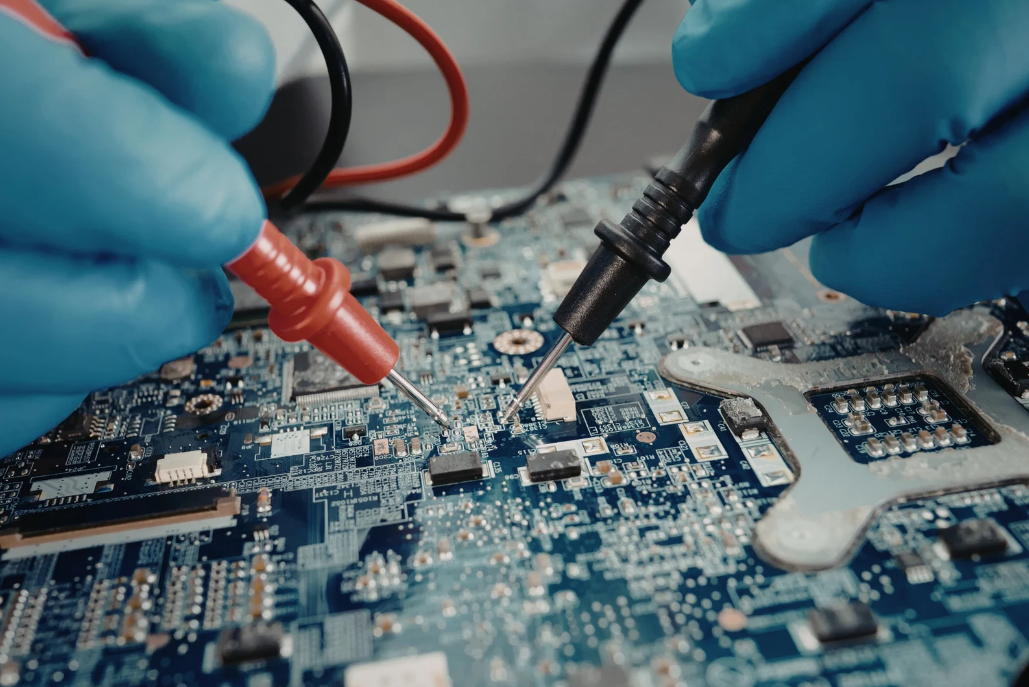How Atomization Works
Atomization is the process where a liquid is broken into tiny droplets. This happens when a liquid film on a solid surface is disturbed enough to break apart. Ultrasonic atomization uses high-frequency sound waves to create these droplets. The rapid up and down motion of an ultrasonic tip forms a film of liquid into standing capillary waves.
Key Components of Atomizing Transducers
Atomizing transducers have several key parts:
- Ultrasonic transducer: This part vibrates to create sound waves.
- Power source: Provides the energy needed for the transducer to work.
- Signal generator: Controls the frequency and intensity of the sound waves.
These parts work together to turn liquid into a fine mist.
Advantages Over Traditional Methods
Atomizing transducers offer several benefits over traditional methods:
- Efficiency: They use less energy to create a fine mist.
- Precision: They can produce very small droplets, which is useful in many applications.
- Versatility: They can be used with a wide range of liquids, including viscous ones.
Atomizing transducers are changing the way we disperse liquids, making processes more efficient and precise.
Applications in the Pharmaceutical Industry
Atomizing transducers are revolutionizing the pharmaceutical industry by enhancing the delivery and effectiveness of various drug forms. These devices are pivotal in creating fine mists and sprays, which are essential for several pharmaceutical applications.
Inhalable Drugs
Atomizing transducers play a crucial role in the development of inhalable drugs. They ensure that medications are dispersed into fine particles, making it easier for patients to inhale them. This method is particularly beneficial for treating respiratory conditions like asthma and chronic obstructive pulmonary disease (COPD). The fine mist generated by these transducers ensures efficient drug delivery to the lungs.
Nasal Sprays
Nasal sprays are another significant application of atomizing transducers. These devices help in creating a consistent and fine spray, which is essential for the effective delivery of medications through the nasal route. This method is commonly used for administering vaccines, pain relief medications, and treatments for allergies.
Oral Solid Dosage Forms
While atomizing transducers are primarily known for their role in creating mists and sprays, they also have applications in the production of oral solid dosage forms. These devices can be used in the coating process of tablets and capsules, ensuring a uniform and controlled release of the medication. This enhances the effectiveness and stability of the drugs.
Atomizing transducers are transforming the pharmaceutical industry by providing innovative solutions for drug delivery and production. Their ability to create fine mists and sprays is particularly valuable in developing inhalable drugs and nasal sprays, ensuring efficient and effective treatment for patients.
Advancements in Ultrasonic Atomization
High-Frequency Sound Waves
Ultrasonic atomization uses high-frequency sound waves to break liquids into tiny droplets. This method is often employed in medical devices for inhalation therapies and in humidifiers for creating a fine mist. The rapid mechanical motion of an ultrasonic tip causes a film of liquid to form into standing capillary waves. These waves then break apart into small droplets, making the process highly efficient.
Medical Device Integration
In the medical field, ultrasonic atomization is revolutionizing inhalation therapies. Devices that use this technology can deliver medication more effectively to patients. This method is also used in nebulizers, which are essential for treating respiratory conditions. The precision and efficiency of ultrasonic atomization make it a preferred choice in medical applications.
Humidification Systems
Ultrasonic atomization is also widely used in humidification systems. These systems create a fine mist that helps maintain optimal humidity levels in various environments. The technology is energy-efficient and produces a consistent mist, making it ideal for both residential and commercial use.
The invention discloses an ultrasonic atomization assisted electrospinning technique and belongs to the field of preparation and applications of nano materials.
Ultrasonic atomization is not just limited to medical and humidification applications. It is also being explored for its potential in other fields, such as fuel injection systems and spray painting applications. The versatility and efficiency of this technology make it a valuable tool in various industries.
Enhancing Agricultural Efficiency
Precision pesticide application is transforming modern farming. By using atomizing transducers, farmers can target specific areas of their fields, reducing the amount of chemicals used and minimizing environmental impact. This method ensures that pesticides are applied evenly, leading to healthier crops and better yields.
Efficient fertilizer dispersion is crucial for optimal crop growth. Atomizing transducers help in breaking down fertilizers into fine particles, allowing for even distribution across the field. This not only improves nutrient absorption by plants but also reduces waste and cost for farmers.
Herbicide spraying has become more effective with the use of atomizing transducers. These devices ensure that herbicides are dispersed in a fine mist, covering a larger area with less product. This method helps in controlling weeds more efficiently and promotes sustainable farming practices.
The use of atomizing transducers in agriculture is a game-changer, offering precise and efficient solutions for crop management.
| Application | Benefit |
| Precision Pesticide Application | Targeted spraying, reduced chemical use |
| Fertilizer Dispersion | Even distribution, improved nutrient absorption |
| Herbicide Spraying | Efficient weed control, sustainable practices |
Explore the new DJI agriculture drones, Agras T50 and T25, designed for enhanced crop management and efficiency.
Role in Additive Manufacturing
Additive manufacturing, often known as 3D printing, has been transformed by atomizing transducers. These devices are crucial in processes like powder bed fusion and binder jetting. They help create fine metal powders that serve as the raw material for 3D printing, enabling the production of complex geometries with high precision.
Powder Bed Fusion
In powder bed fusion, atomized metal powders are spread in thin layers. A laser or electron beam then fuses these layers to form solid objects. This method is ideal for creating intricate designs that would be difficult to achieve with traditional manufacturing techniques.
Binder Jetting
Binder jetting involves spreading a layer of powder and then using a liquid binder to glue the particles together. This process is repeated layer by layer until the final object is formed. Atomizing transducers ensure the powder is fine and uniform, which is essential for the quality of the final product.
Complex Geometries
One of the standout features of additive manufacturing is its ability to produce complex geometries. Atomizing transducers play a key role in this by providing the fine powders needed for detailed and precise printing. This capability opens up new possibilities for innovation in various industries.
The use of atomizing transducers in additive manufacturing is not just about making things; it’s about making things better, faster, and more efficiently.
Sustainability and Green Solutions
Reducing Energy Consumption
Atomizing transducers are designed to cut down on energy use. This technology uses less power compared to traditional methods. By using high-frequency sound waves, these devices can atomize fluids more efficiently. This means less energy is needed to achieve the same results, making the process more sustainable.
Minimizing Waste Generation
One of the key benefits of atomizing transducers is their ability to minimize waste. Traditional methods often result in a lot of unused material. However, with atomizing transducers, the process is more precise, leading to less waste. This is especially important in industries like pharmaceuticals, where reducing waste can lead to significant cost savings.
Exploring Alternative Energy Sources
Researchers are exploring the use of green solvents and alternative energy sources to make atomization processes even more sustainable. Solar thermal systems, for example, are being considered for powering these devices. This not only reduces reliance on fossil fuels but also aligns with global efforts to achieve sustainable development goals.
By integrating alternative energy sources, we can make atomization processes more eco-friendly and efficient.
Conclusion
In summary, atomizing transducers offer a promising solution for enhancing efficiency while promoting sustainability. By reducing energy consumption, minimizing waste, and exploring alternative energy sources, we can move towards a more sustainable future.
Integration with Industry 4.0
The integration of atomizing transducers with Industry 4.0 concepts, such as IoT (Internet of Things) and AI (Artificial Intelligence), promises enhanced process control and optimization. Smart atomizers equipped with sensors and actuators can adjust parameters in real-time, improving efficiency and product quality.
Smart Manufacturing
In smart manufacturing, atomizing transducers play a crucial role by providing precise control over fluid dispersion. This leads to better product consistency and reduced waste. The ability to monitor and adjust processes in real-time ensures that manufacturing remains efficient and adaptable to changing conditions.
Predictive Maintenance
Predictive maintenance is another significant advantage of integrating atomizing transducers with Industry 4.0. By using data from sensors, it’s possible to predict when maintenance is needed, reducing downtime and extending the lifespan of equipment. This proactive approach helps in maintaining continuous production and avoiding unexpected failures.
Data-Driven Optimization
Data-driven optimization leverages the vast amounts of data generated by smart atomizers. By analyzing this data, manufacturers can identify patterns and trends that lead to improved processes and product quality. This continuous feedback loop ensures that the manufacturing process is always evolving and improving.
The future of manufacturing lies in the seamless integration of advanced technologies, ensuring that processes are not only efficient but also adaptable to the ever-changing demands of the market.
In Summary
In conclusion, atomizing transducers are changing the way we handle fluids. By breaking down liquids into tiny droplets, they help in many fields like medicine, agriculture, and manufacturing. This technology makes processes more efficient and can even save energy. As we keep improving these tools, we can expect even more exciting uses in the future. Atomizing transducers are truly opening up a new era in fluid dispersion, making our world better in many ways.
Frequently Asked Questions
What is atomization?
Atomization is the process of breaking down bulk materials, like liquids, into tiny particles or droplets. This helps increase the surface area for better mixing and interaction with other substances.
How does ultrasonic atomization work?
Ultrasonic atomization uses high-frequency sound waves to turn liquids into tiny droplets. This method is often used in medical devices and humidifiers.
What are the benefits of using atomizing transducers?
Atomizing transducers offer better efficiency, reduced energy consumption, and lower waste generation compared to traditional methods.
Where is atomization used in the pharmaceutical industry?
Atomization is used in making inhalable drugs, nasal sprays, and oral solid dosage forms to ensure precise delivery and effectiveness.
How does atomization help in agriculture?
In agriculture, atomization helps in the precise application of pesticides, fertilizers, and herbicides, leading to better crop yield and reduced chemical use.
What role does atomization play in additive manufacturing?
In additive manufacturing, atomized metal powders are used in processes like powder bed fusion and binder jetting to create complex geometries and high-quality products.



